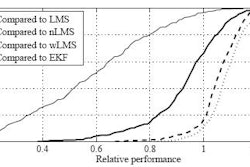A rare autopsy study of more than 3,500 individuals found that the incidence of colorectal adenomas is low in those under 50, but rises sharply in the sixth decade of life.
The study, which provides important new information about the natural history of colorectal polyps and cancer in the young, supports current cancer screening guidelines recommending that screening begin at age 50.
Colorectal cancer is the second leading cause of cancer-related deaths, and U.S. citizens have a 6% lifetime risk of colorectal cancer. But adherence to screening recommendations is poor. Even though five-year survival rates are about 90% when colorectal cancer is diagnosed at an early stage, fewer than 40% of patients present at an early stage.
"The present study found a greater than three-fold increase in the prevalence of colorectal adenomas in older adults, abruptly starting in the sixth decade," wrote Dr. Francis Giardiello and colleagues in Clinical Gastroenterology and Hepatology (September 2008, Vol. 6:9, pp. 1,011-1,015).
Giardiello, a professor of medicine, oncology, and pathology at Johns Hopkins University School of Medicine in Baltimore, along with colleagues from the Netherlands and Puerto Rico, evaluated the prevalence and natural history of colorectal polyps by reviewing records of 3,558 autopsies performed at Johns Hopkins Hospital between 1985 and 2004 on patients ages 20 to 89.
The researchers categorized the cohort by sex, race, and 10-year age groups, comparing the prevalence and location of adenomas between younger adults (ages 20 to 49) and older adults (ages 50 to 89). In those with adenomas, the mean number of adenomas found on autopsy was compared by age.
The standard autopsies included the counting and measurement of polyps, as well as histopathologic evaluation of each lesion, wrote Giardiello, along with Dr. Cheryl Pendergrass, Dr. Daniel Edelstein, and colleagues. The authors recorded data on age, sex, and race, and the location of polyps in the colorectum. Patients with a premortem suspicion of colorectal disease were excluded, as were subjects with incompletely reported information about the number or location of polyps detected at autopsy.
The review identified a low but rising prevalence of colorectal adenomas, from 1.7% to 3.6% between ages 20 and 50. The prevalence rose sharply after age 50, ranging from 10% to 12% between ages 50 and 89. The risk ratio for adenomas in older adults compared to younger adults was 3.76 (95% confidence interval [CI], 3.73-3.79; p < 0.001).
Standardized rates of autopsies with colorectal adenomas per hundred autopsies by decade of age
|
||||||||||||||||||||||||
| All data from Clinical Gastroenterology and Hepatology, September 2008, Vol. 6:9, pp. 1,011-1,015. |
Crude rates represent the number of autopsies with colorectal adenomas divided by the number of autopsies. Crude prevalences were adjusted for differences in demographics between the study group and the general Maryland population.
"In young adults, the prevalence of adenomas was greater in men than in women (risk ratio, 1.09; 95% CI, 1.07-1.11; p < 0.001) and in whites compared with blacks (risk ratio, 1.28; 95% CI, 1.26-1.31; p < 0.001)," the authors wrote. "In older adults, the prevalence of adenomas also was greater in men than in women, but greater in blacks rather than whites."
Different groups also showed differences in the location of adenomas. Overall, younger adults were more likely to have left-sided polyps (right/left ratio, 0.59), and 63% of the adenomas were found in the left colon from the splenic flexure to the rectum. In older adults, 55% of adenomas were left-sided.
Of note, both younger and older blacks had predominately right-sided adenomas. The right/left ratio was 6.40 among younger adult blacks, and 1.43 in older blacks, the authors wrote. Two or more adenomas in younger adults and five or more in older adults represent a polyp burden outside the norm.
"Colorectal adenomas infrequently occur in younger adults and are more prevalent in the left colon," Giardiello and his team concluded. "Irrespective of age, blacks have more right-sided adenomas ..." For this reason, they noted, blacks in particular should avoid sigmoidoscopy in favor of screening methods that examine the entire colorectum.
By Eric Barnes
AuntMinnie.com staff writer
October 14, 2008
Related Reading
Colorectal cancer screening increased in older Americans, September 30, 2008
Prevalence of larger colon polyps higher in blacks than whites, September 29, 2008
Benefit of flexible sigmoidoscopy limited to distal colon, September 24, 2008
Follow-up care lacking for many older colon cancer survivors, September 11, 2008
Socioeconomics, treatment largely explain racial gap in colon cancer survival, April 24, 2007
Copyright © 2008 AuntMinnie.com


















